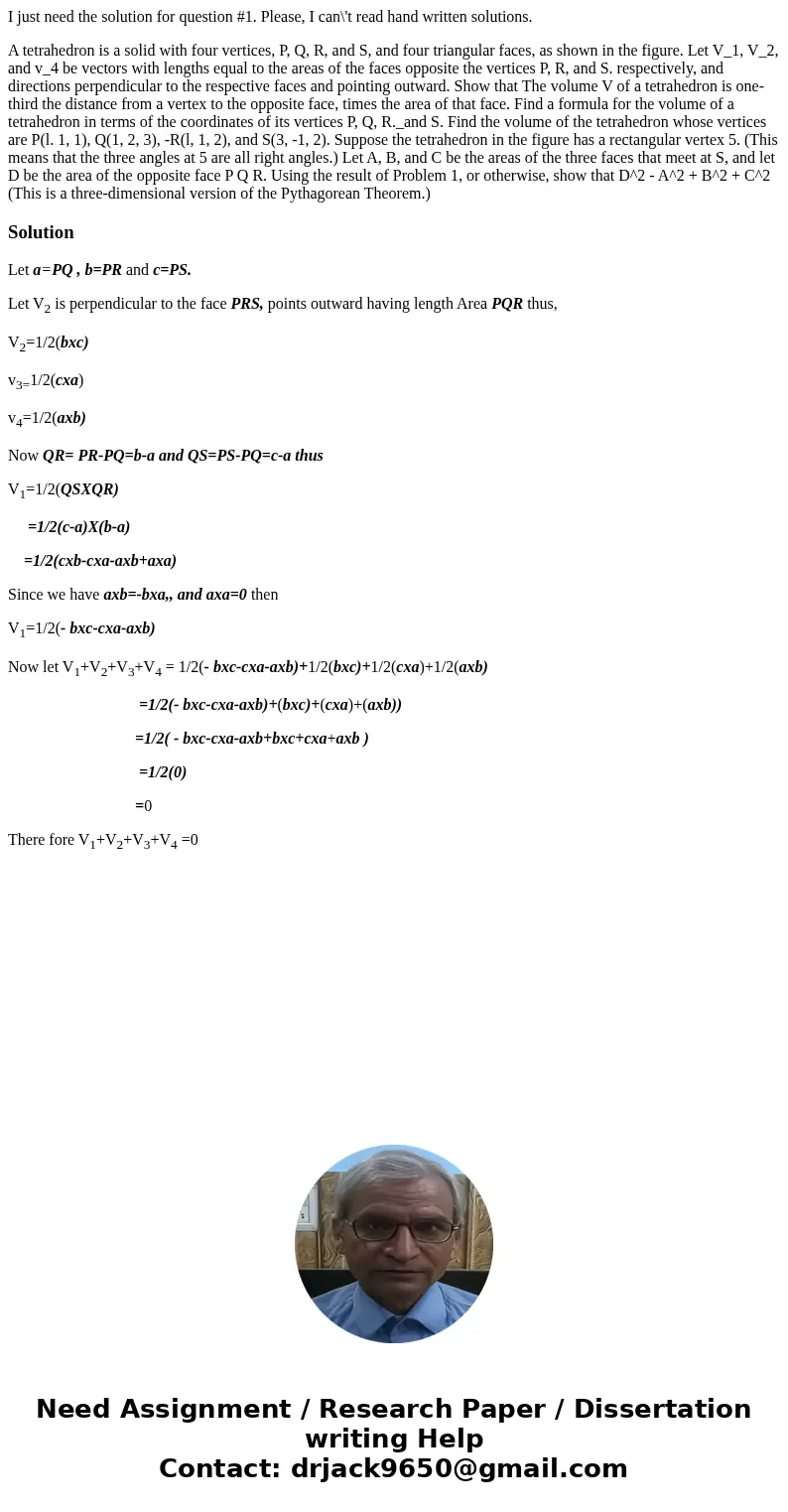I just need the solution for question 1 Please I cant read h
I just need the solution for question #1. Please, I can\'t read hand written solutions.
A tetrahedron is a solid with four vertices, P, Q, R, and S, and four triangular faces, as shown in the figure. Let V_1, V_2, and v_4 be vectors with lengths equal to the areas of the faces opposite the vertices P, R, and S. respectively, and directions perpendicular to the respective faces and pointing outward. Show that The volume V of a tetrahedron is one-third the distance from a vertex to the opposite face, times the area of that face. Find a formula for the volume of a tetrahedron in terms of the coordinates of its vertices P, Q, R._and S. Find the volume of the tetrahedron whose vertices are P(l. 1, 1), Q(1, 2, 3), -R(l, 1, 2), and S(3, -1, 2). Suppose the tetrahedron in the figure has a rectangular vertex 5. (This means that the three angles at 5 are all right angles.) Let A, B, and C be the areas of the three faces that meet at S, and let D be the area of the opposite face P Q R. Using the result of Problem 1, or otherwise, show that D^2 - A^2 + B^2 + C^2 (This is a three-dimensional version of the Pythagorean Theorem.)Solution
Let a=PQ , b=PR and c=PS.
Let V2 is perpendicular to the face PRS, points outward having length Area PQR thus,
V2=1/2(bxc)
v3=1/2(cxa)
v4=1/2(axb)
Now QR= PR-PQ=b-a and QS=PS-PQ=c-a thus
V1=1/2(QSXQR)
=1/2(c-a)X(b-a)
=1/2(cxb-cxa-axb+axa)
Since we have axb=-bxa,, and axa=0 then
V1=1/2(- bxc-cxa-axb)
Now let V1+V2+V3+V4 = 1/2(- bxc-cxa-axb)+1/2(bxc)+1/2(cxa)+1/2(axb)
=1/2(- bxc-cxa-axb)+(bxc)+(cxa)+(axb))
=1/2( - bxc-cxa-axb+bxc+cxa+axb )
=1/2(0)
=0
There fore V1+V2+V3+V4 =0

 Homework Sourse
Homework Sourse